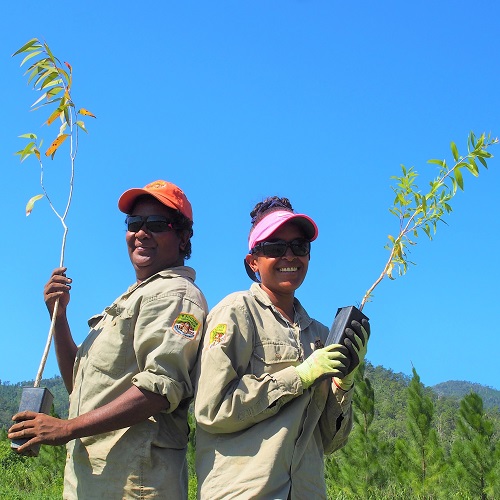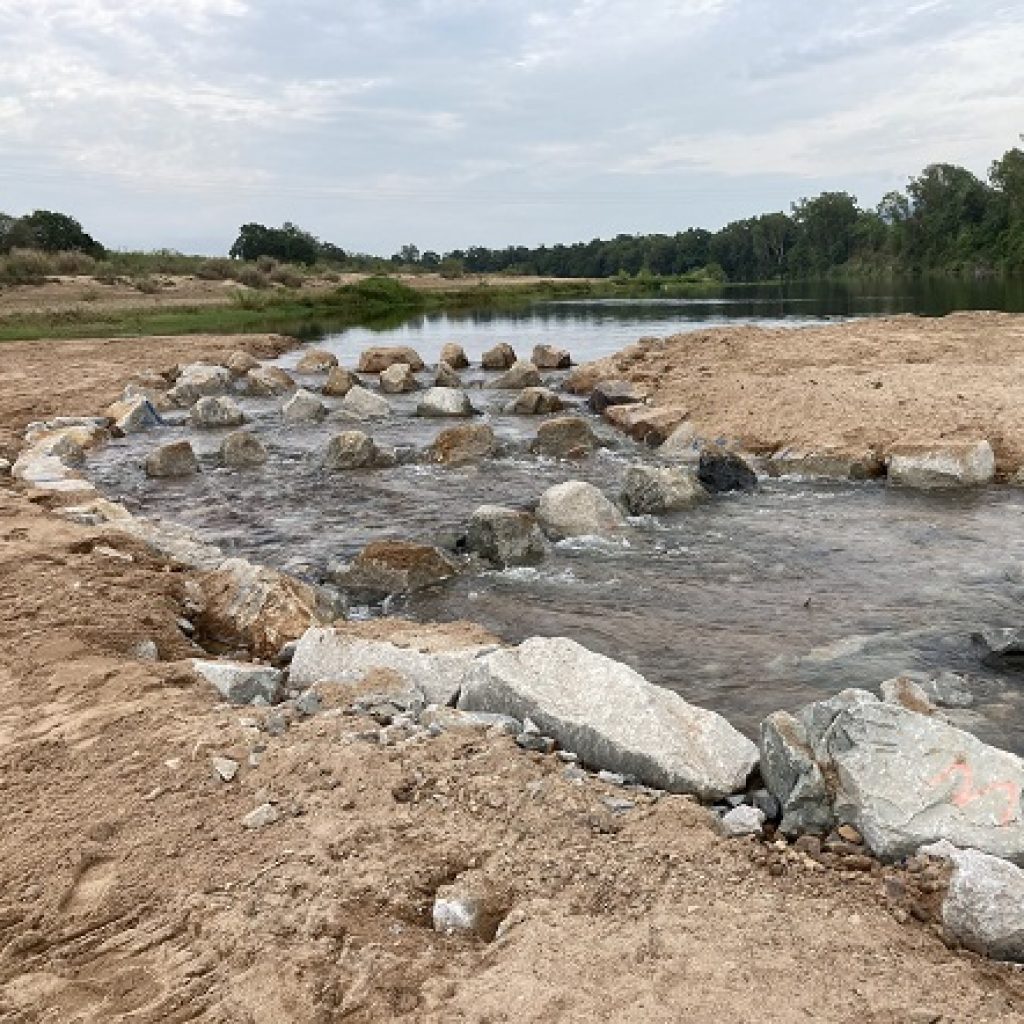CASSOWARY CREDIT SCHEME
NEW BIODIVERSITY CREDIT SCHEME
Overview
The Cassowary Credit Scheme is a new biodiversity market scheme that was developed to increase investment into the Wet Tropics region for habitat restoration.
It is a mechanism that enables investors such as governments, philanthropists or corporates to pay landholders and land managers to undertake habitat restoration activities.
The scheme targets land that is unsuitable for agriculture. It is designed to create economic benefits for regional communities, including First Nations people, and to create biodiversity outcomes.
Background
The unprecedented impacts of climate change, along with other threats like invasive weeds, require immediate action to protect the biodiversity values of the Wet Tropics. Landscape-scale restoration is critical to build ecosystem resilience and restore functional ecological connectivity.
Some progress has been made but it is limited by small-scale and inconsistent investment that is heavily dependent on Government grant programs, which wax and wane, or small philanthropic donations.
Technical experts and the conservation community have been calling for diversified, large-scale investment. In an attempt to attract new investment, Terrain undertook a feasibility study to determine whether a market-based scheme could operate as an incentive to landholders and provide an additional mechanism to massively upscale investment in restoration.
Since the initial feasibility study, we have worked in collaboration with regional partners to design a practical, scientifically robust method to account for the change in condition generated by Cassowary Credit project activities.
Solutions
Like Carbon Credits and Reef Credits, Cassowary Credits are earned for a measurable improvement – in this case for vegetation condition.
A Cassowary Credit is a quantified amount of improvement in rainforest condition, achieved using an approved method that can be measured, verified and converted to credits.
A cassowary credit is earned through rainforest reinstatement, repair, threat mitigation or enhanced protection. Landholder projects are monitored and payments are based on actual achievements. Investors buy verified improvements and a quantifiable contribution to rainforest habitat improvement. Credits are issued when results are delivered and verified, guaranteeing a credible improvement to the Wet Tropics bioregion.
Achievements so far
This is a world-leading initiative and, as a consequence, we are participating in the World Economic Forum Financing for Nature Initiative.
With a Standard and first Methodology completed, this product can move towards market launch.
Location
The Wet Tropics region, Far North Queensland, Australia
Partners
Terrain NRM is working with private industry, government, scientists, indigenous groups and wildlife experts to design and develop this new ecosystem services market scheme.
Funders
The Cassowary Credit Scheme project is supported by the Queensland Government’s Land Restoration Fund and World Wildlife Fund.
Frequently Asked Questions
One cassowary credit represents one unit of rainforest condition improvement
The cassowary is an iconic umbrella species that is strongly associated with Far North Queensland’s tropical rainforests. The scheme’s focus is habitat restoration across the region’s rainforest ecosystems.
Anyone wanting to support sustainable change – from governments and corporations to philanthropists and individuals. Increasingly, investors are attracted to environmental market schemes for moral or ethical reasons, to align with environmental and social responsibility targets, to respond to customer demand, for marketing opportunities and to support regional environments and communities.
Landholders and land managers in the Wet Tropics region, who meet all scheme requirements, for example freehold landholders who farm or manage land for conservation or other purposes, local government entities, Protected Area Managers and not-for-profit organisations managing land for conservation.
Cassowary credits can supplement existing land-based incomes, such as from agriculture or tourism. They’re also an opportunity to improve the condition of land for a range of reasons – from biodiversity and soil health improvements to general aesthetics.
Real change happens when we measure outcomes rather than activities (such as the number of trees planted or the area of land restored). Projects range from rainforest reforestation on cleared or heavily disturbed land to weed control to improve the condition of existing vegetation. Landholders or managers must use an approved methodology for their projects.
The scheme rewards cumulative progress towards an end goal. Rather than being paid once a hectare of functional rainforest is produced (which could take many years), the scheme pays according to the rate of condition improvement from the starting baseline. This enables a solid flow of income in the first few years after projects are established, which gradually levels off until the crediting limit of the scheme is reached (25 years). The system aligns with high inputs during site preparation, planting and maintenance requirements in the first few years, and ongoing but reducing maintenance and monitoring.
Terrain NRM initiated the concept and coordinated its design with funding from the Queensland Government’s Land Restoration Fund. A working group, with a wide range of science and technical experts, supported the project’s development and delivery including significant contributions to the underlying science and accounting approach. Traditional Owners advised on design and potential benefits to Rainforest Aboriginal communities.
Eco-Markets Australia is Australia’s first independent voluntary environmental markets administrator. Eco-Markets is also administrator of the Reef Credit Scheme, a voluntary environmental market to improve water quality in reef catchments.
With GIS analysis, 50,000 hectares of land has been identified that is unsuitable for agriculture based on soil type, slope or closeness to watercourses. To avoid competing with other land uses such as agriculture, this less-productive land is the target for Cassowary Credit projects.
The scheme is designed for nature-positive projects. As such, Cassowary Credits cannot be used to meet conservation and restoration commitments in a compliance market, for example to satisfy legal offset obligations.
Risk of reversal is a mechanism for insuring the Cassowary Credit Scheme against residual risks that can’t be managed by permanence and other arrangements, including temporary losses associated with a disturbance event or long-term losses if a participant fails to deliver expected outcomes. A proposed Risk of Reversal Buffer (RRB) of 5% will be discounted from all projects and held by the Secretariat in an RRB account. Any cassowary credits withheld as part of the RRB will be retained by the Cassowary Credit Scheme Secretariat and used to mitigate future reversals across the Cassowary Credit Scheme.
One of the principles of the Cassowary Credit Scheme is that outcomes must be additional. Improvements in rainforest condition arising from a Cassowary Credit project must be changes that wouldn’t have occurred without the project, such as through natural forest regeneration or participation in other environmental markets. Specific guidance is provided to help participants to account for this. Using data from research and restoration projects in the region, as well as expert advice, scenarios have been developed to quantify increases in condition that could have happened if the project hadn’t taken place. This must then be accounted for (i.e. subtracted) in the calculation of credits.
‘Leakage’ is a negative impact outside the project area in response to project activities. An example is a grazier with a Cassowary Credit project who clears or degrades vegetation on another part of their property to make more grazing land available. The Cassowary Credit Scheme Restoration Methodology includes a process to avoid leakage.
Permanency is the assurance that native vegetation in the project area will not be cleared. The outcomes of a Cassowary Credit project (e.g. improvement in vegetation condition) must be protected for a period of 25 years to satisfy permanence requirements. The Secretariat uses a compliance and assurance framework to ensure permanence requirements are met, with actions ranging from information and advice to deregistering or suspending projects, or prosecutions for illegal activity.
It is possible to stack Cassowary Credits with other credits. Strict guidelines apply to ensure additionality requirements are met. The Cassowary Credit Restoration Methodology outlines the way participants must account for any increase in condition that is likely to happen because of participation in other environmental markets involving restoration of woody vegetation cover.
A range of processes are in place to ensure the highest integrity principles are incorporated in design and delivery of the Cassowary Credit Scheme. An independent scientific peer review of Cassowary Credit Scheme documents will be undertaken before full market launch. Cassowary Credits will be administered by an independent secretariat who will provide governance and oversight. A secure and transparent registry system will record and track all credit transactions. Eight core principles relate to the generation of credits:
- Real – All Cassowary Credit projects must yield quantifiable and verifiable improvements in rainforest condition.
- Measurable – All Cassowary Credits generated from project activities must be quantifiable using a process from an approved Cassowary Credit Methodology.
- Permanent – Any improvement in rainforest condition generated through the Cassowary Credit Scheme must be permanent, as defined in the Cassowary Credit Standard.
- Additional – Any improvement in rainforest condition generated through the Cassowary Credit Scheme must be additional to what would have happened without the project activities.
- Independently verified – Any improvement in rainforest condition generated through the Cassowary Credit Scheme must be verified by an approved verifier.
- Unique – Each Cassowary Credit must be unique and only associated with a single Cassowary Credit Project.
- Transparent – There must be sufficient and adequate processes to ensure transparency and confidence in the Scheme by all stakeholders.
- Conservative – Accurate or conservative assumptions, values, and procedures must be used to ensure improvements in rainforest condition are not over estimated.
Terrain NRM has been participating in a World Economic Forum Biodiversity Credits Integrity and Governance working group. This group is developing integrity and governance principles for emerging biodiversity credits markets. A draft set of integrity principles has been developed. These principles will be used during upcoming pilot-testing of the Cassowary Credit Scheme.
There will be direct financial benefits via service delivery and job creation (e.g. native trees, restoration activities, technical services) through to reputational benefits and the creation of a more resilient region. Specific requirements exist within the scheme to ensure local businesses and service providers are used, retaining and building regional skills and capacity.
Rainforest Aboriginal People were consulted during the scheme’s design and will have ongoing involvement in pilot-testing. Traditional owners can participate directly in the scheme through projects on indigenous-owned land. Where there is existing capacity, First Nation service providers will be used for delivery of products and services. Traditional owners will also have training and employment opportunities through the scheme and through projects on their land.
The methodology for the scheme could be applied in other ways to generate investment and deliver credible, measurable improvements in vegetation condition. Examples include Green Bonds and Sustainable Finance Initiatives.
Key concepts of this scheme may be transferable to other locations if relevant science and data is available for those regions.
Over half the world’s GDP ($44 trillion) is dependent on nature and its ecosystem services – air, water and soil. Investment in conservation is significantly under-funded (an estimated $700 billion+ of under-funding per year) and public funding alone can’t bridge the gap. Government grants and philanthropic donations are characteristically small-scale and inconsistent. Longer-term, larger-scale funding is required to halt and reverse the decline in biodiversity.
A market-based scheme has the potential to attract corporate and philanthropic investment at scale. And a single administrative platform with independent, transparent and accountable governance oversight guarantees credibility and provides an enduring investment mechanism – beyond the timeframes of any government program. Having multiple investment instruments – from government grants to market schemes – supports involvement from a wide range of investors and provides the greatest opportunity to generate sufficient investment for large-scale restoration.
RELATED NEWS
Saving endangered mahogany gliders
 Elaine
Elaine
 February 26, 2024
February 26, 2024
New fishways help species to breed up
 Elaine
Elaine
 January 22, 2024
January 22, 2024
Cassowary crossings improved
 Elaine
Elaine
 September 26, 2023
September 26, 2023




































